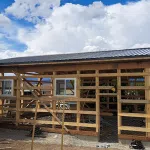
Free Naloxone training offered monthly at Vernon library
People wanting to learn how to respond to an overdose emergency have a free resource to access in Vernon.
Interior Health offers a free, drop-in Naloxone training course on the first Wednesday of every month out of the Vernon Public Library’s community room.
Vernon Matters and other members of the local media attended a training session at the library Thursday, April 18, and learned of the signs and steps involved in recognizing and responding to an overdose
The session was led by Kat Moore, overdose prevention nurse, and Keri Locheed, peer coordinator and overdose prevention site clinician.



